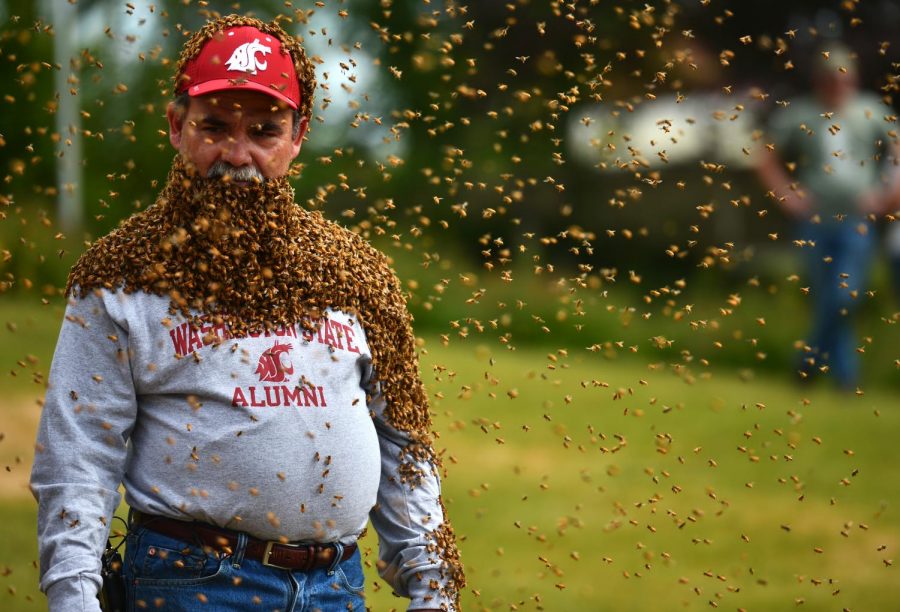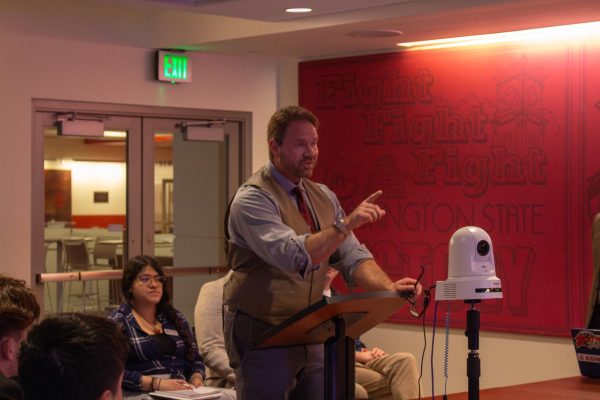Donators contribute to planned pollinator facility
Center would include controlled atmosphere rooms, screened area
LUKE HOLLISTER | DAILY EVERGREEN FILE
Bees swarm Provost Dan Bernardo on June 17, 2016, giving him an unusual beard. Alumni donated $1 million toward the new Honey Bee and Pollinator Research Facility.
October 5, 2018
Two WSU alumni donated $1 million toward the effort to build the WSU Honey Bee and Pollinator Research Facility on the Pullman campus.
Ken Christianson, a retired seed grower, and his wife, Sue, donated the money to help reach the target goal of $15 million to complete the planned 15,000-square-foot center.
Melissa Bean, director of development for the College of Agricultural, Human and Natural Resource Sciences, said the campaign was started in June 2016. She said they currently have fundraised $3.72 million.
Bean said facilities and operations at WSU have identified a site for the building that is near the Eggert Family Organic Farm on the east side of campus.
Steve Sheppard, entomology department chair and professor, said WSU has been conducting bee research since he arrived in 1996.
“Back then we had a kind of three-car garage that was our bee building,” Sheppard said.
Currently, the bee research facilities at WSU are spread around three different locations up to half a mile apart.
Sheppard said WSU needs this facility to bring all the bee research under one roof and to expand into other areas such as cryopreservation of honey bee genetics and controlled atmospheric storage of bees.
Brandon Hopkins, assistant research professor in the department of entomology, said people are very accustomed to the beautiful, tasty variety of foods available, especially fruits and vegetables.
“Without honey bees to pollinate, we would be left with wheat and rice,” Hopkins said.
He said in Washington state there are not enough bees to meet the pollination requirements for the $3 billion apple industry.
“We depend on bee keepers to bring bees in by the semi load in order to provide the pollination requirements,” Hopkins said.
Sheppard said the research facility will include a diagnostics lab, a cryogenic germplasm repository, a molecular lab and controlled atmosphere rooms.
“The controlled atmosphere rooms are big enough to bring in 40 to 80 colonies at a time, not like the walk in refrigerator in the back of a grocery store,” Sheppard said.
In addition, the new building will feature a screened observation area, allowing visitors to watch bees in demonstration gardens. It will also include classrooms and instructional lecture-style areas.
“We want to educate our community, visitors and alumni and hope they learn more about pollinators and honey production,” Bean said.





















